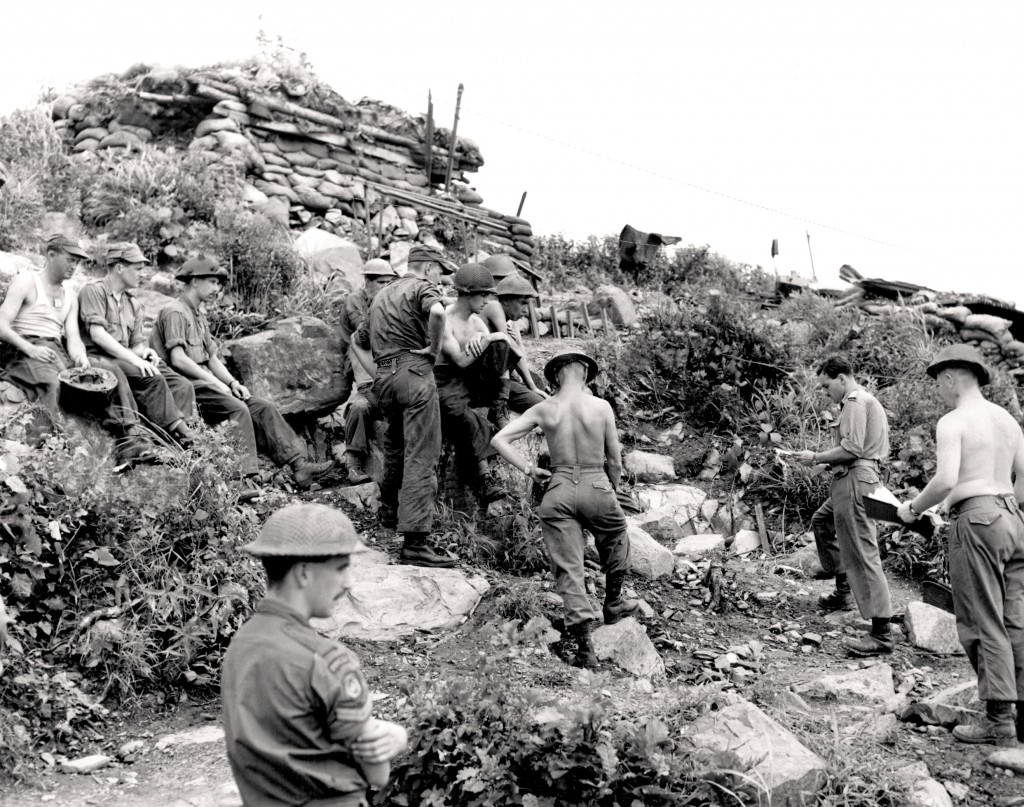
Hill 355, about 40 kilometres south of Seoul, South Korea, was so named by the United Nations military coalition during the Korean War because it was 355 metres above sea level. The troops called it Little Gibraltar because, like the British fortress for which it was named, it commanded the highest ground overlooking supply lines. Whoever controlled it had the upper hand in the sector.
Canadians saw a lot of action on and around Hill 355, defending the front lines and pushing back heavy enemy assaults. Every Canadian battalion saw service there at some point.
Following heavy bombardment in November 1951, the Chinese wrested control from American troops. The Chinese “shelled for a long, long time,” recalled Gunner Noel Knockwood in a Heroes Remember video. The Royal 22nd Regiment held its defensive position under the hill despite being surrounded, until the Americans could get it back.
The counterattack began with bombardment.
“I remember I was called back to my gun (a 105 mm howitzer), and we began counter-fire onto the enemy. After that, when we would meet up with the infantry boys…they told us that ‘If it weren’t for the artillery, we wouldn’t be here today,” recalled Knockwood.

Members of Princess Patricia’s Canadian Light Infantry occupy positions on Hill 355. [DEPARTMENT OF NATIONAL DEFENCE]
Bombardment at the beginning of October 1952 signalled that the Chinese were preparing another major strike.
On Oct. 17, the Royal Canadian Regiment came under heavy artillery attack. By Oct. 22, defences were badly damaged, telephone wires were cut and ammunition storage pits were caved in.
An attack was expected, so all night, one man stood watch in each fighting slit, according to an account written by the Canadian Army Historical Section.
The Chinese launched an attack Oct. 23 which was so fierce that some Canadians were forced to withdraw. “The last troops to leave the position were not the Chinese,” said the account. Men from two platoons “had held out to the traditional ‘last round,’ and then played dead.”
Allied tank and mortar fire was ordered up to pepper Hill 355 as well as the area to the west and the valley to the north.
A counterattack was called at about midnight, and the Hill was retaken on Oct. 24, at a cost of 18 Canadian dead, 43 wounded and 14 taken prisoner.
The Chinese attacked again several times in November, but no ground was yielded.
Advertisement






















